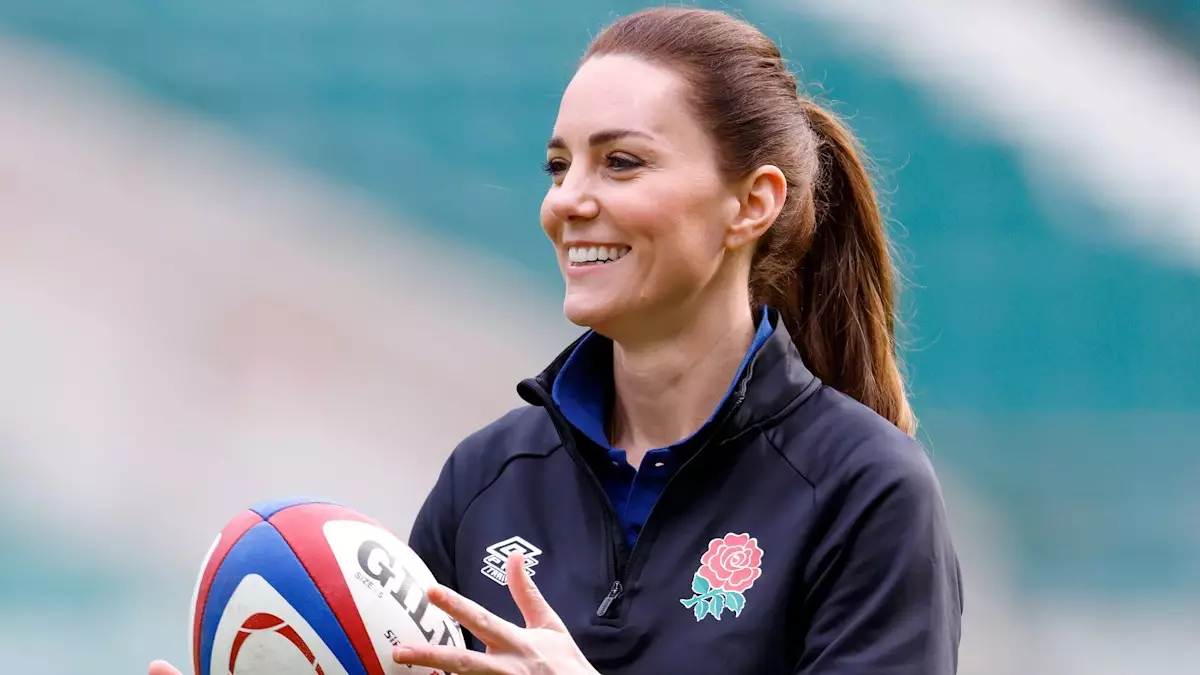For years, the image of royal figures has often been confined to elegance, poise, and traditional poise-centric pursuits. Yet, a closer look at their lives reveals another narrative—one of resilience, physical capability, and modern vitality. The Princess of Wales, Kate Middleton, exemplifies this shift dramatically. Her apparent passion for sports and functional fitness signals a powerful message: strength and femininity are not mutually exclusive. This is not merely about maintaining a regal appearance but about empowering oneself through every movement, challenging outdated notions that traditional femininity means fragility. Her demonstration of core stability—holding a complex V-sit pose with apparent ease—resonates far beyond the royal bubble, encouraging women everywhere to recognize their physical potential.
Beyond the Surface: Understanding True Core Strength
Many people equate core strength solely with a six-pack or superficial abs. However, fitness experts like Nancy Best emphasize that the core’s true purpose extends far deeper. It acts as the foundation for stability, posture, and overall movement. When Kate engaged her core in that 2016 training session, she wasn’t just working towards a toned aesthetic; she was activating complex muscle groups responsible for daily function and resilience. The transverse abdominals, internal obliques, and pelvis stabilizers form an intricate network that supports the spine, prevents injury, and enhances athletic performance. Remarkably, these muscles aren’t always targeted with popular exercises like crunches—compound movements that involve multiple joints and muscle groups are far more effective for building truly functional core strength.
Rethinking Fitness: Incorporating Compound and Functional Movements
For women seeking to emulate Kate’s strength—regardless of age or postpartum status—the key is adopting a holistic, strategic approach. Nancy Best advocates integrating resistance exercises such as goblet squats with isometric holds like planks. This combination challenges the body in multiple planes of motion, engaging the core dynamically and statically. Incorporating rotational movements, like Russian twists, further enhances functional mobility, essential for everyday activities and injury prevention. Whether you are a busy professional or a new mother, these exercises serve as a reminder that fitness isn’t just about appearance but about enabling independence, stability, and strength for life’s unpredictable demands.
Mobility: The Missing Link to Sustained Strength
In her athletic displays, Kate’s fluidity and control aren’t accidental—they stem from diligent attention to mobility and flexibility. Nancy underscores this point: a well-rounded fitness regime involves improving functional range of motion. Tight hip flexors, stiff hamstrings, or shoulder restrictions can hamper performance and increase injury risk. Kate’s apparent ease in holding challenging poses reveals a commitment to mobility work, which helps keep the body supple and resilient. For women over 40, particularly those juggling motherhood and career, developing this flexibility is vital to long-term health, reducing niggles, and maintaining independence.
Strength in Diversity: Challenging the Stereotype of Aging Women
One of the most inspiring aspects of Kate’s fitness journey is its universality. Age, postpartum reality, or busy schedules don’t have to be barriers. In fact, women over 40 often face unique physiological challenges—muscle mass loss, hormonal shifts, and increased risk of back issues. Yet, as Nancy points out, prioritizing holistic core training can reverse some of these vulnerabilities. It’s a misconception that core exercises are vain attempts for superficial appeal; instead, they are vital tools for vitality, posture, and pain prevention. Embracing strength with purpose transforms the narrative around aging women—from delicate to formidable—and encourages a new era of empowered health consciousness.
Empowering Women Through Movement
Kate Middleton’s subtle yet powerful demonstration underscores a broader cultural shift—women are reclaiming their strength, rediscovering their bodies, and redefining what it means to be feminine. Her example suggests that athleticism isn’t reserved solely for athletes or youthful models; it’s a universal pursuit accessible to women of all backgrounds and ages. A focus on functional movement, mobility, and core stability not only improves physical health but also boosts confidence, resilience, and independence. Moving beyond superficial ideals, women are embracing a holistic power rooted in movement—an empowering force that challenges stereotypes and fosters true vitality.

